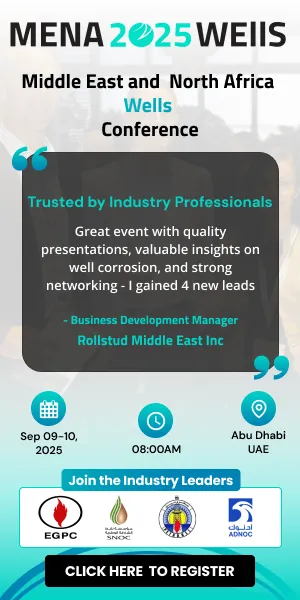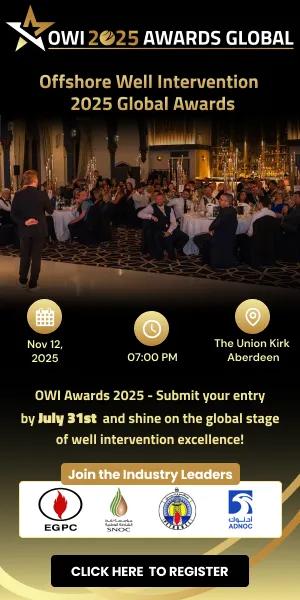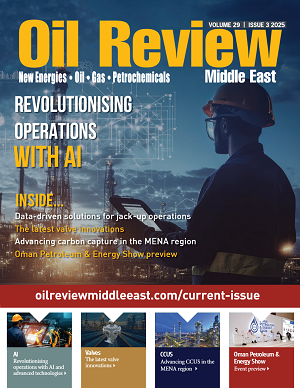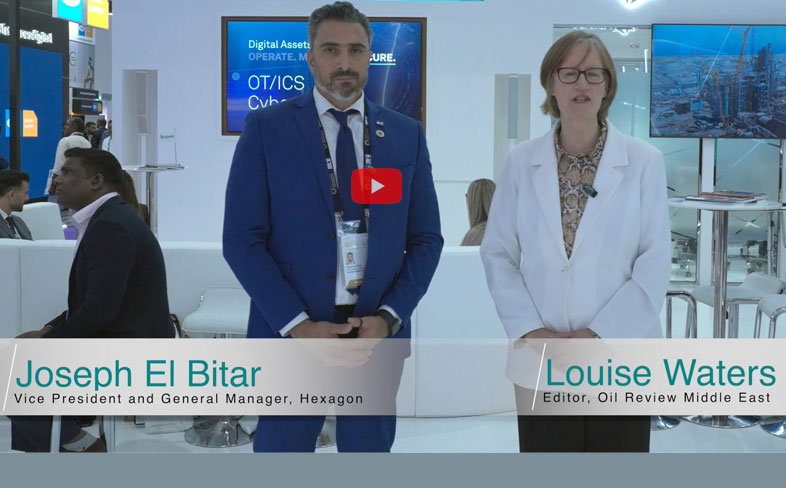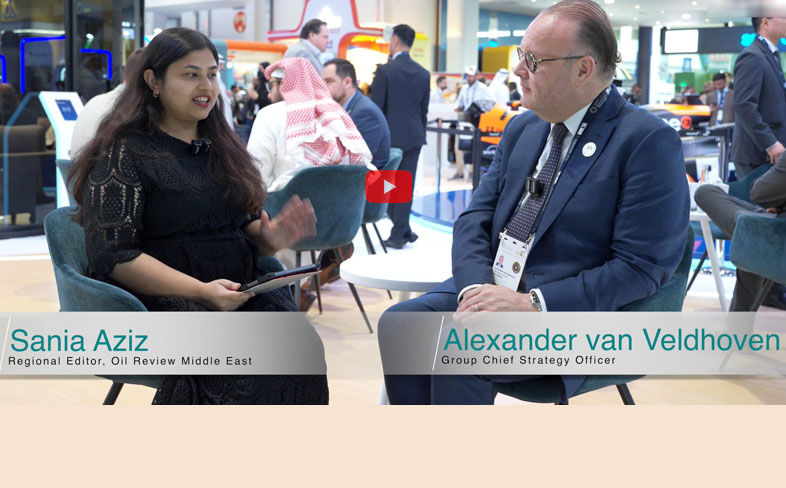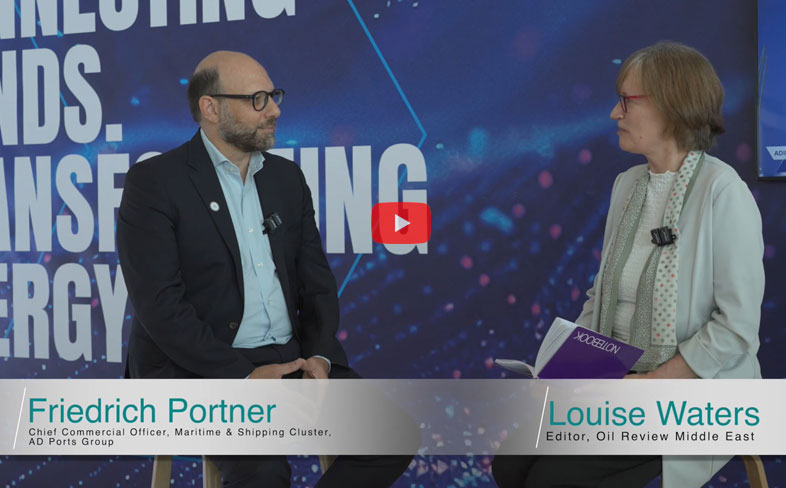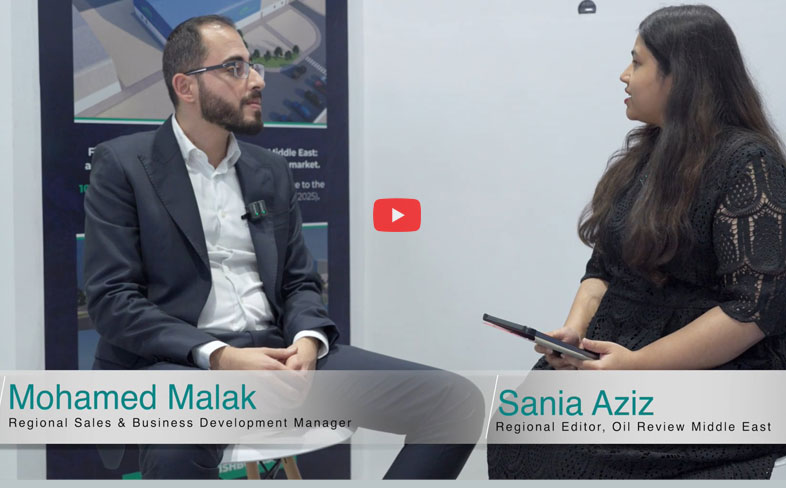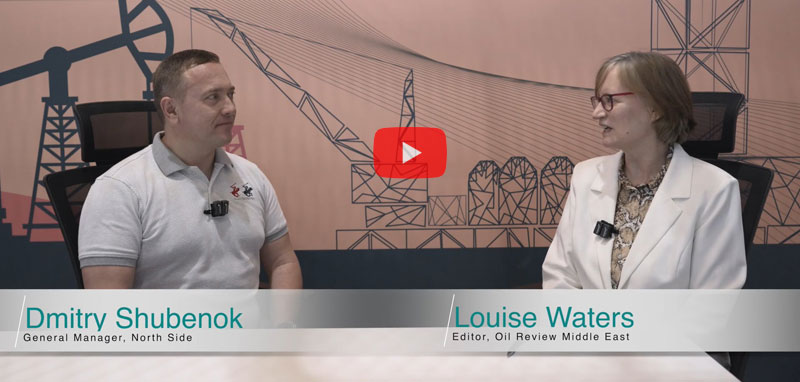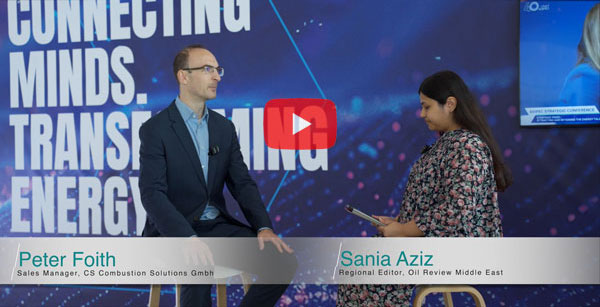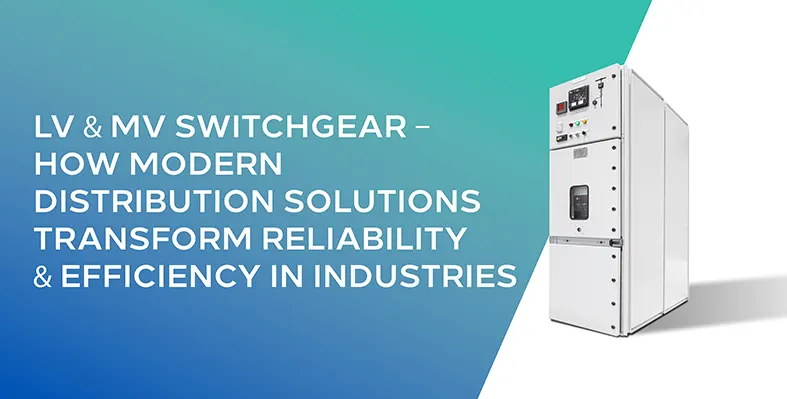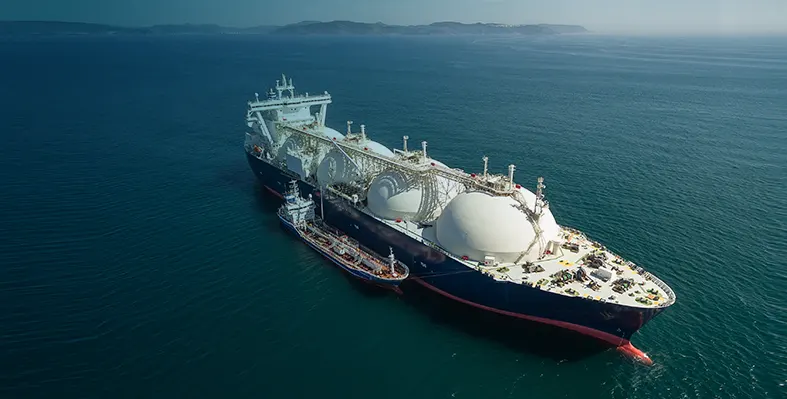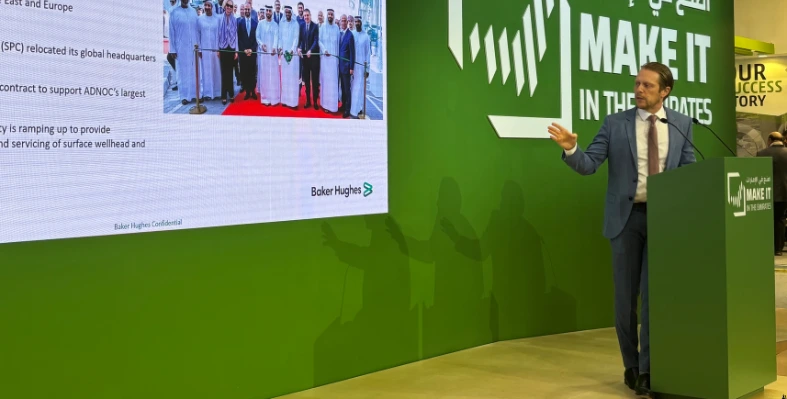In The Spotlight
IFS launches Nexus Black to accelerate industrial AI adoption
IFS, a leading provider of enterprise cloud and Industrial AI software, has launched IFS Nexus Black, a strategic innovation programme to drive ahead AI adoption for industrial organisations
Built on the foundation of IFS.ai, Nexus Black combines advanced AI technologies, deep industrial context and a dedicated delivery team, partnering with customers to tackle bespoke, complex challenges in asset-intensive industries. It enables rapid development and deployment of AI capabilities in a matter of weeks.
Initial use cases include predictive maintenance, manufacturing scheduling optimisation, AI copilots for service and sales, and intelligent automation for finance and supply chain.
Nexus Black benefits include:
• Agile, sprint-based co-creation and prototyping. A proven co-development model that is safe, scalable and fast
• Structured four phase model: Problem Definition; Proof of Value; Accelerated Development; Digital Continuity
• Access to dedicated AI engineers, domain experts, and solution architects, with deep expertise in industrial contexts and enterprise architecture
• Collaboration on agentic AI and contextual intelligence with industrial scalability
IFS’s deep industry footprint and proximity to rich industrial asset data enables the combination of context and AI, resulting in trusted contextual AI into live operations, quickly and securely.
“Too many businesses are stuck choosing between inflexible enterprise tools or niche AI vendors with no roadmap to scale. Nexus Black changes that,” said Mark Moffat, CEO of IFS. “Nexus Black is IFS’s commitment to rapid, high-impact AI innovation for leading industrial organisations. It combines the agility of a start-up with the industrial context, security and delivery strength IFS is known for. It’s how we help our customers leap ahead - not just catch up.”
“AI capabilities like co-pilots and embedded agents are no longer a differentiator, they’re expected,” said Matt Kempson, SVP, Commercial at IFS. “What sets IFS apart is how we apply AI – rapidly, with deep industrial context, and in direct collaboration with our customers. Nexus Black gives us a razor-sharp edge, engaging deeply with complex industrial challenges, rapidly building proof points, and translating innovation into scalable impact across our AI portfolio.”
At its IFS Unleashed event last October, the company highlighted the transformative power of industrial AI and underlined its ambition to become the undisputed category leader in industrial software, for the benefit of all its customers.
Securing Egypt's energy future
The Gulf can help stabilise Egypt’s energy market, says leading energy and commodity trading firm BGN International
From the sun-scorched ports of Alexandria to the industrial sprawl of Suez, Egypt’s energy story is at a critical turning point. For decades, the country enjoyed the luxury of being a net exporter of natural gas, with domestic production more than meeting its own needs. Today, that narrative has flipped. Rapidly rising domestic energy demand – projected to surge by 39% this decade – combined with a worrying decline in local production has left Egypt increasingly dependent on imported fuel. In a country where economic stability and political calm are tightly bound to energy security, this imbalance has become a pressing concern.
The solution doesn’t lie in short-term fixes but in a strategic, Gulf-backed reset of Egypt’s energy market. That means securing long-term LNG and LPG supply deals at competitive prices and, just as critically, using those partnerships to create local jobs, transfer vital technology, and give Egyptians a more active role in powering their economy.
This is not merely an economic argument – it’s a political imperative. With youth unemployment at 19.7% among those aged 20-24, Cairo needs to turn energy investments into engines of job creation. Collaborations with multinational players should go beyond resource extraction, focusing instead on empowering local talent to build, operate, and eventually lead the country’s energy infrastructure. Gulf investment, if properly structured, can help catalyse this shift by demanding that technology transfer and domestic workforce development are baked into every deal.
Addressing supply gaps
Yet, even with the right partners, time is short. Egypt recently issued a tender seeking four LNG cargoes for delivery between February and March, a clear signal that near-term supply gaps must be addressed immediately. Fulfilling urgent gas needs through last-minute tenders would be better served with longer term contracts with serious natural gas players like Dubai-based BGN International, an energy and commodity trading firm with an extensive natural gas division.
The firm already contributes to Egypt’s oil sector through its large stake in the Canadian company Mediterra Energy and its gas operators are steadily growing there. As the largest buyer of LPG from the United States and a key player in global oil and gas flows, BGN has the reach and logistical muscle to secure competitive LNG contracts at a time when Egypt’s import needs are becoming both more urgent and more expensive.
But stabilising Egypt’s energy future isn’t just about meeting domestic demand – it’s about revitalising exports and reasserting the country’s role as a regional energy hub. Egypt already boasts significant infrastructure, from the Idku and Damietta LNG export terminals to its extensive pipeline network. What’s required now is a fresh approach that integrates these conventional assets with forward-looking investments in transition fuels like LPG and LNG.
Flexible approach needed
Here again, companies like BGN International offer a potential model. With decades of experience balancing crude operations alongside transition fuels like natural gas, they demonstrate how energy traders offer countries a flexible range of resources to power economies sustainably. If Egypt can replicate this dual approach – leveraging its geographic advantages while modernising its energy offerings – it could once again become a key exporter to Europe and beyond, even as global markets shift toward cleaner energy solutions.
In the end, the challenge facing Egypt is about more than energy. It’s about restoring confidence – in its economy, in its political stability, and in its role on the global stage. Gulf partnerships can provide the capital and expertise to make that happen. But for those investments to truly pay off, they must come with a commitment to building Egypt’s future not just from beneath the ground – but from within its people.
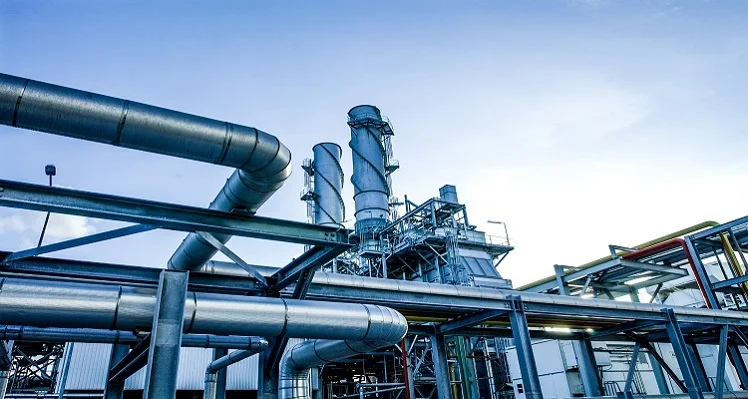
The current uncertainty around the tariff landscape is reshaping the energy and natural resources sectors.
Tariff scenarios for the future energy landscape
A new report from Wood Mackenzie highlights the far-reaching implications of ongoing trade tensions for the energy and natural resources sectors
"Trading cases: Tariff scenarios for taxing times", presents three distinct outlooks for the global energy and natural resources industries – Trade Truce (the most optimistic), Trade Tensions (the most likely) and Trade War (the worst outcome) – each painting a dramatically different picture for global GDP, industrial production and the supply, demand, and price of oil, gas/LNG, renewable power and metals through 2030.
“The current uncertainty around the tariff landscape is reshaping the energy and natural resources sectors,” said Gavin Thompson, vice chairman, of energy at Wood Mackenzie. "Lower economic growth will curb energy demand, prices and investment, while higher import prices will raise costs in sectors from battery storage to LNG. Energy leaders must now become masters of scenario planning, preparing for everything from continued growth to significant market disruptions.”
The report highlights the key role of trade policies in shaping the future oil markets, with oil demand in 2030 varying by up to 6.9mn bpd between scenarios. In the Trade Truce scenario, oil demand reaches 108mn bpd by 2030, with Brent averaging US$74/bbl, whereas the Trade War scenario sees demand falling in 2026 and Brent plunging to US$50/bbl.
“Trade policies are emerging as a pivotal force in shaping the future of oil markets," said Alan Gelder, SVP refining, chemicals and oil markets. “Falling oil demand results in the global composite gross refining margin collapsing to break-even levels, creating pressure for the rationalisation of weaker sites, particularly in Europe.”
As for the natural gas and LNG outlook, the Trade War scenario could exacerbate the anticipated global LNG oversupply. In the Trade Truce scenario, LNG prices fall from US$11.2/mmbtu in 2024 to US$7.2/mmbtu by 2030 as the market absorbs a wave of new LNG supply growth. In the Trade Tension scenario, the impact might be limited. However, in the Trade War scenario, prices fall further as Chinese LNG demand falls sharply, while tariffs force buyers to redirect US LNG cargoes.
“Although tariffs pose downside risks to global LNG supply, it is possible there will be more investments in US LNG," said Massimo Di Odoardo, vice president of gas and LNG research at Wood Mackenzie. “With President Trump pointing countries towards buying more US energy, including LNG, to reduce their bilateral trade surpluses, more investments in US LNG plants are likely, also contributing to higher gas demand in North America."
The report concludes that while recent trade agreements have encouraged optimism, it is advisable to plan for divergent trade outcomes.
Thompson said, "Despite recent trade agreements, the global trade landscape remains fraught with uncertainty. In a scenario of escalating tariffs, we anticipate significant impacts on manufacturing and industrial production, which could slow the momentum of low-carbon energy investments. Energy companies must be prepared to adapt swiftly to mitigate risks and navigate supply chain disruptions. With major economies potentially facing prolonged recovery periods, agility in strategy and operations will be crucial for the energy sector in this unpredictable trade environment."
Read the entire report here: https://www.woodmac.com/horizons/tariff-scenarios-taxing-times/
SPE Offshore Europe
Venue:
P& J Live, Aberdeen
UK
Dates:
2-5 September 2025
Website:
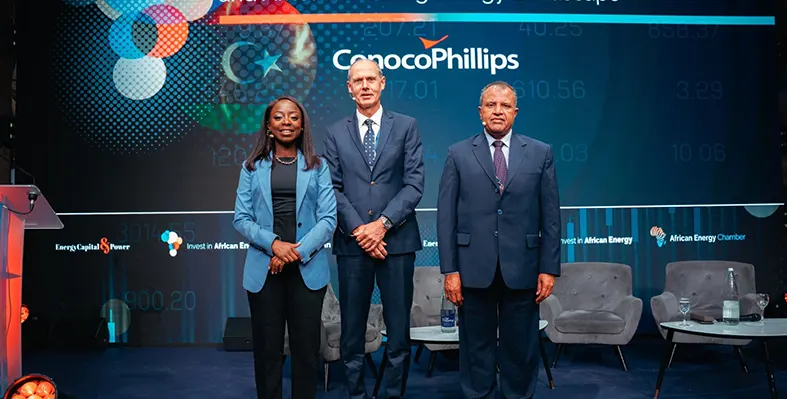
Libya's latest bid round has attracted international investor interest. (Image source: Energy Capital & Power)
Libya bid round attracts international investor interest
Libya’s latest upstream licensing round has already attracted more than 40 bids, according to Abdolkabir Alfakhry, Advisor to Libya’s Minister of Oil and Gas, signalling growing international interest in its largely untapped hydrocarbon potential
The bid round, launched in March, offers 22 blocks for exploration and development (11 Offshore and 11 Onshore) including areas with undeveloped discoveries estimated to contain a minimum of 2.0 Bboe in hydrocarbon resources.
The Minister, who was addressing a session sponsored by ConocoPhillips at the Invest in African Energy Forum in Paris, noted that results of the bid round are expected around November. “This will open a new environment for international companies to work in Libya.”
Libya’s assets are underexplored, particularly offshore, Alfakhry said, pointing to the country’s strategic location on the Mediterranean and its proximity to European markets as key competitive advantages.
“The bid round signals Libya’s integration into the global energy market,” he said.
Steiner Våge, president for Europe, the Middle East and Africa at ConocoPhillips, confirmed the U.S. major’s intention to deepen its engagement in Libya and across the African continent.
“Libya is a place where we can work – over the last few years, we’ve significantly increased production at the Waha concession,” said Vaage. “We want to see Libya prosper. We’d also like to transfer our knowledge, and we want to work with partners that have similar objectives – that is the starting point.”
At Libya Energy & Economic Summit 2025 earlier this year, Bashir Garea, technical advisor to the chairman of the NOC, highlighted the country’s immense oil and gas potential.
“We have 48 billion barrels of discovered but unexploited oil, with total potential estimated at 90 billion barrels, especially offshore,” he said, adding that Libya also has 122 trillion cubic feet of gas yet to be developed. “To unlock this potential, we need more investors and new technology, particularly for brownfield revitalisation.”
Oil majors including Eni Repsol, bp and OMV have recommenced exploration in Libya in recent months following a 10-year hiatus. However the recent eruption of violent clashes in Tripoli following the assassination of a powerful militia leader, shows that the current security situation is far from stable.
Eight OPEC+ countries confirm July production hike
Eight OPEC+ oil producers have confirmed they will hike production in July, according to their previously agreed plan to unwind 2.2mn bpd in voluntary cuts from April 2025
The eight OPEC+ countries, which previously announced additional voluntary adjustments in April and November 2023, namely Saudi Arabia, Russia, Iraq, UAE, Kuwait, Kazakhstan, Algeria, and Oman, will hike production by 411,000 bpd in July from the June 2025 production level.
In a statement, OPEC comments that this action is taken in view of the “steady global economic outlook and current healthy market fundamentals, as reflected in the low oil inventories,” and in accordance with the decision agreed upon on 5 December 2024 to start a gradual and flexible return of the 2.2 million barrels per day voluntary adjustments starting from 1 April 2025. It adds that the gradual increases may be paused or reversed subject to evolving market conditions, and that this flexibility will allow the group to continue to support oil market stability.
The eight OPEC+ countries also noted that this measure will provide an opportunity for the participating countries to accelerate their compensation. The eight countries reiterated their collective commitment to achieve full conformity with the Declaration of Cooperation, including the additional voluntary production adjustments that were agreed to be monitored by the JMMC during its 53rd meeting held on 3 April 2024.
They also confirmed their intention to fully compensate for any overproduced volume since January 2024. The eight OPEC+ countries will hold monthly meetings to review market conditions, conformity, and compensation.
The eight countries will meet on 6 July 2025 to decide on August production levels.
Despite the increase in supply, oil prices have held steady, with geopolitical tensions likely contributing, such as the Russia/Ukraine war, the release of the IAEA report on the Iran nuclear programme and potential supply disruptions in Libya and Canada.
Some analysts view the OPEC+ supply hike as reflecting Saudi Arabia’s attempt to regain market share, with its budget and spending plans under pressure.
Jadwa Investment, in its report on Saudi Arabia’s Q1 budget statement, notes that the Kingdom recorded a fiscal deficit of SR58.7bn in Q1-25, as revenue declined by 10% year-on-year due to lower oil revenue, while spending was 5% higher. Oil revenue declined year-on-year by 18% due to lower dividends from Saudi Aramco and lower oil prices.
“Oil revenue will remain under pressure in 2025 as oil prices have trended lower than in Q1 and output gains will only partly offset this,” it comments.
“The outlook for oil prices remains highly uncertain, and much will depend on the fortunes of the global economy during this period of volatile US policymaking. The evolution of OPEC+ policy is also uncertain and important.”
In its latest Oil Market Update, Jadwa remarks, “Global fundamentals may improve if US policymaking settles down, the US Fed finds room for more rate cuts, and China continues with stimulus. But, with oil inventories likely to build during 2025, further oil production growth and structurally slowing Chinese demand, the oil market may lack an upward catalyst.”
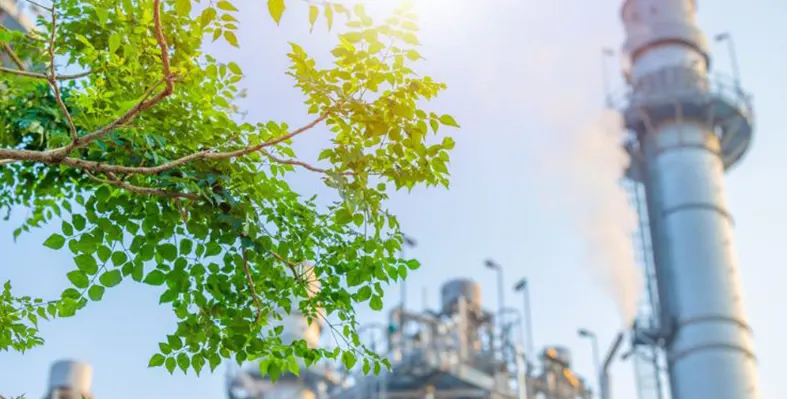
The petrochemical industry is increasingly turning its attention to chemical recycling. (Image source: Synergy)
Circular chemistry: chemical recycling and the petrochemical industry
As environmental concerns and regulatory pressures gain precedence, the petrochemical industry is increasingly turning its attention to chemical recycling
Often positioned as a potential game-changer, this technology seeks to offer a more sustainable path by converting plastic waste back into its original chemical components, enabling the production of new materials with properties comparable to those made from virgin feedstocks. Its attractiveness lies in addressing the twin evils – the plastic waste crisis and the need for higher-quality recycled materials.
How does chemical recycling work?
Chemical recycling, also referred to as advanced recycling, differs from mechanical recycling in both process and potential. Rather than grinding and melting plastics, it involves breaking down polymers into monomers or other base chemicals through processes such as pyrolysis, gasification, or depolymerisation. This allows for the creation of new plastics suitable for applications that require high purity, including food-grade packaging, where mechanically recycled plastics often fall short.
Several companies around the world have begun to scale up their chemical recycling initiatives.
• ExxonMobil, for example, has announced plans to invest US$200mn to expand its chemical recycling capabilities at its Baytown and Beaumont complexes in Texas. With its proprietary Exxtend technology, the company aims to process up to half a million tons of plastic waste per year by 2027.
• In Europe, Eastman Chemical is building a US$1bn molecular recycling facility in France. Once operational, it is expected to recycle up to 160,000 tons of plastic waste annually using polyester renewal technology.
• In India, Reliance Industries has become a pioneer in this space, producing circular polymers at its Jamnagar refinery, which has received ISCC-Plus certification to ensure sustainability and traceability.
However, the economic challenges associated with chemical recycling are substantial. These technologies are energy-intensive, resulting in higher operational costs compared to traditional recycling or even the production of virgin plastics. In some cases, chemically recycled polyethylene terephthalate (PET) can cost two to three times more than its virgin counterpart, limiting its competitiveness. Additionally, the process often requires clean and sorted plastic waste as feedstock, which is difficult to obtain in many regions due to inadequate waste segregation and contamination. This issue not only affects cost but also scalability.
Advantages of chemical recycling
From an environmental standpoint, chemical recycling does offer certain advantages. Studies indicate that pyrolysis — a commonly used method in chemical recycling — can emit up to 50% less CO₂ than the incineration of mixed plastic waste. The process also has the potential to eliminate hazardous substances embedded in plastics, such as legacy chemicals and substances of very high concern (SVHC), resulting in cleaner end-products. Nevertheless, these benefits must be weighed against the significant energy inputs required for these processes. Without low-carbon energy sources or efficiency improvements, the net environmental gains may be limited.
Looking ahead, the development of chemical recycling will depend on a combination of technological, regulatory, and economic factors. Enhancing waste collection and sorting infrastructure will be crucial for improving feedstock quality. Policy frameworks that clearly define recycled content and support traceability will help create market confidence. Meanwhile, collaboration between governments, research institutions, and industry stakeholders could accelerate innovation and reduce costs over time.
While chemical recycling is unlikely to single-handedly resolve the petrochemical sector’s sustainability challenges, it may play a valuable role within a broader strategy for circularity. When complemented by upstream design changes, responsible consumption, mechanical recycling, and waste minimization efforts, it has the potential to contribute meaningfully to the sector's transition.
Whether it ultimately transforms the petrochemical industry or becomes a niche complement to existing methods will depend on how these challenges are addressed in the years to come.
This article is authored by Synergy Consulting IFA.
WEF report highlights transformative technology convergences
The World Economic Forum has released a new report examining how emerging technology combinations are reshaping industries and how business leaders can harness these insights to create new business models
The accelerating combination of technologies such as artificial intelligence (AI), quantum computing and engineering biology is transforming industries and unlocking new economic and societal value. Yet many organisations struggle to identify where and how to invest.
The Technology Convergence Report, developed in collaboration with Capgemini, introduces the 3C Framework – combination (the integration of distinct technologies), convergence (restructuring of value chains) and compounding (network effects and ecosystem transformation) – to help decision-makers identify where emerging technologies intersect
The report identifies 23 high-potential combinations drawn from over 230 subcomponents across eight critical domains: artificial intelligence, omni computing, engineering biology, spatial intelligence, robotics, advanced materials, next-generation energy and quantum technologies.
It highlights AI as a key enabler, making many of these synergies commercially viable. Several combinations demonstrate the transformative potential of technology convergence across sectors like infrastructure, healthcare, energy and transportation, including:
Cognitive robotics: Agentic AI, spatial intelligence and robotic advancements in manipulation and adaptive control are enabling autonomous systems to make intelligent decisions in complex environments, driving progress in automotive and smart manufacturing.
Digital twin ecosystems: Advances in sensor networks and AI simulation systems are enhancing digital twins, enabling more integrated, end-to-end impact, and expanding their efficiency and applicability across sectors from aerospace to healthcare.
Hybrid quantum-classical computing: By combining quantum capabilities with the reliability of classical systems, this approach is already unlocking quantum’s potential in finance, molecular simulation and complex optimisation.
Materials informatics: Predictive modelling and transformers are accelerating R&D in advanced materials by enabling virtual testing of combinations and structures before synthesising them in a lab, driving more efficient development cycles in manufacturing, chemicals and beyond.
“Rapid advances across multiple technology domains are creating an undeniable shift in industries. The Technology Convergence report gives leaders a clear model to harness what is coming next,” said Jeremy Jurgens, managing director at World Economic Forum.
“The question is not about whether technology convergence will reshape industries. That journey has already begun. The real challenge is how companies can position themselves to be champions of convergence,” said Aiman Ezzat, chief executive officer of Capgemini.
Technological convergence is not a passing trend; it is a structural shift in how innovation occurs, the report concludes. By adopting a systems-thinking approach and investing at the intersections, organisations can anticipate where value is moving, position themselves in new value chains and lead the next wave of transformation.
SAFEEN Group webinar addresses future of offshore operations
Oil Review Middle East hosted a very well-attended webinar on 20 November on the future of offshore operations, in association with SAFEEN Group, part of AD Ports Group
The webinar explored the latest trends and challenges in the rapidly evolving world of offshore operations, focusing on groundbreaking innovations that are driving sustainable and efficient practices. In particular, it highlighted SAFEEN Green – a revolutionary unmanned surface vessel (USV), setting new benchmarks for sustainable and efficient maritime operations.
Erik Tonne, MD and head of Market Analysis at Clarksons, gave an overview of the offshore market, highlighting that current oil price levels are supportive for offshore developments, and global offshore capex is increasing strongly. The Middle East region will see significant capex increase over the coming years, with the need for rigs and vessels likely to remain high. Offshore wind is also seeing increased spending. Global rig activity is growing, while the subsea EPC backlog has never been higher, with regional EPC contracts seeing very high activity. Tonne forecast that demand for subsea vessels and other support vessels will continue to increase.
Tareq Abdulla Al Marzooqi, CEO SAFEEN Subsea, AD Ports Group, introduced SAFEEN Subsea, a joint venture with NMDC, which offers reliable and innovative survey, subsea and offshore solutions to support major offshore and EPC projects across the region. He highlighted the company’s commitment to sustainability, internationalisation and local content, and how it is a hub for innovations and new ideas, taking conceptual designs and converting them to commercial projects. A key project is SAFEEN Green, which offers an optimised inspection and survey solution.
Tareq Al Marzooqi and Ronald J Kraft, CTO, Sovereign Global Solutions ME and RC Dock Engineering BV. outlined the benefits and capabilities of SAFEEN Green as compared with commercial vessels, in terms of safety, efficiency, profitability and sustainability. It is 30-40% more efficient through the use of advanced technologies, provides a safer working environment given it is operated 24/7 remotely from a control centre, and offers swappable payload capacity. Vessels are containerised and can be transported easily to other regions. In terms of fuel consumption, the vessel is environment-friendly and highly competitive, reducing emissions by 90% compared with conventional vessels, with the ability to operate on 100% biofuel.
As for future plans, SAFEEN Green 2.0 is under development, which will be capable of carrying two inspection work-class ROVs simultaneously. A priority will be to collect data to create functional AI models for vessels and operations, with the first agent-controlled payload systems in prospect by around 2027.
To view the webinar, go to https://alaincharles.zoom.us/rec/share/mNHjZhAhQzn1sPzmFWZCgrq7_SckfLRcSb4w81I7aVlokO9sgHM_zVeOqgN3DgJS.bO4OIRqNeFP09SPu?startTime=1732095689000

The UAE can lead by example in demonstrating how hydrogen can be safely and effectively harnessed as a clean energy source.
The importance of hydrogen safety systems
Andrew Dennant, general manager for HIMA Middle East FZE highlights the need for advanced safety systems to be integrated into the hydrogen value chain to ensure the successful and secure adoption of hydrogen in line with the UAE's sustainability goals
As the global energy landscape transitions toward sustainability, hydrogen has emerged as a promising resource, particularly for nations such as the UAE, where clean energy and sustainability are central to national priorities. While hydrogen offers substantial potential as an energy source and reduces carbon emissions, its safe use requires advanced functional safety solutions, especially in large-scale industrial applications.
The role of hydrogen in a sustainable future
Hydrogen is gaining increasing attention as a viable alternative to traditional fossil fuels. Currently, most hydrogen used in industrial processes is derived from natural gas, commonly called grey hydrogen. However, green hydrogen, produced from water using renewable energy sources such as wind or solar power, is becoming increasingly significant. This process enables a substantial reduction in carbon emissions, positioning green hydrogen as a key component in the transition to a global zero-emission energy system.
In the UAE, green hydrogen is expected to play a crucial role in decarbonising various sectors, including power generation, transportation and heavy industry. While hydrogen’s adoption remains limited, its use is anticipated to grow significantly as both technology and infrastructure continue to evolve.
Safe use of hydrogen in industrial applications
Hydrogen is already widely utilised in industrial processes, such as ammonia production for fertilisers and in high-temperature manufacturing processes. Despite its advantages, hydrogen poses unique safety challenges due to its highly flammable nature. Leaks or uncontained releases of hydrogen can result in significant safety hazards. Therefore, hydrogen must be handled with the utmost care during production, storage and transportation.
Ensuring the safe use of hydrogen in industrial settings requires the deployment of advanced safety solutions. These systems must be designed to mitigate the specific application risks if hydrogen is to be used safely throughout their entire lifecycle.
Functional safety solutions for hydrogen
In large-scale operations, such as power plants or industrial facilities, advanced safety systems are essential for managing the inherent risks of hydrogen. A key example is the hydrogen production process, which involves the use of electrolysers to split water into hydrogen and oxygen. These systems require comprehensive safety functions to monitor and safeguard critical factors such as pressure and temperature. As the scale of hydrogen production increases, the complexity and sophistication of safety systems must evolve to match the rising risks associated with large-scale operations.
Transportation and storage: the key challenges
Transportation and storage of hydrogen present additional safety challenges. Due to hydrogen’s molecular properties, it is a highly permeable gas that can leak through even the smallest of cracks in pipelines, posing significant risks. To prevent leaks, advanced leak detection systems are essential. These systems monitor pipelines and storage tanks, providing early warnings and enabling swift corrective action in the event of a leak. Hydrogen storage also requires specialised safety measures. Safety protocols must ensure that storage facilities are equipped with fail-safe systems to mitigate potential risks.
Hydrogen in public transportation: safe and clean
In the UAE, hydrogen is being explored as an alternative fuel for public transportation. Hydrogen-powered buses, trains and other vehicles offer a cleaner alternative to conventional fossil fuel-powered transportation, especially in urban areas where reducing emissions is a priority. However, the integration of hydrogen into public transportation systems requires careful planning and implementation of advanced safety measures.
Safety systems must be developed to manage the use of electricity or hydrogen, depending on the infrastructure. In areas without such infrastructure, hydrogen may serve as the primary energy source. This hybrid approach ensures the safe and efficient operation of hydrogen-powered transportation.
Smart security for safe hydrogen use
As the use of digital technologies and automation in hydrogen systems increases, cybersecurity becomes an increasingly critical aspect of functional safety. The potential for cyberattacks on hydrogen production, storage and transportation systems presents a significant risk to safe and reliable operations. Therefore, it is essential to implement robust cybersecurity measures to protect these systems from malicious threats.
As the UAE continues to innovate in hydrogen technology, safeguarding these systems from cyber threats will be as crucial as the physical safety protocols in place to protect against other risks.
Looking ahead
The UAE is well-positioned to become a global leader in hydrogen production, particularly with its strong commitment to clean energy. However, to fully realise the potential of hydrogen as a key component of the UAE’s energy strategy, advanced safety solutions must be integrated across the entire hydrogen value chain. From production and storage to transportation and end use, these safety systems must evolve in tandem with technological advancements to mitigate risks and ensure the safe and efficient use of hydrogen.
By prioritising functional safety solutions, the UAE can lead by example in demonstrating how hydrogen can be safely and effectively harnessed as a clean energy source, further supporting the nation’s ambitious energy goals and contributing to global efforts toward a sustainable, zero-emission future.













